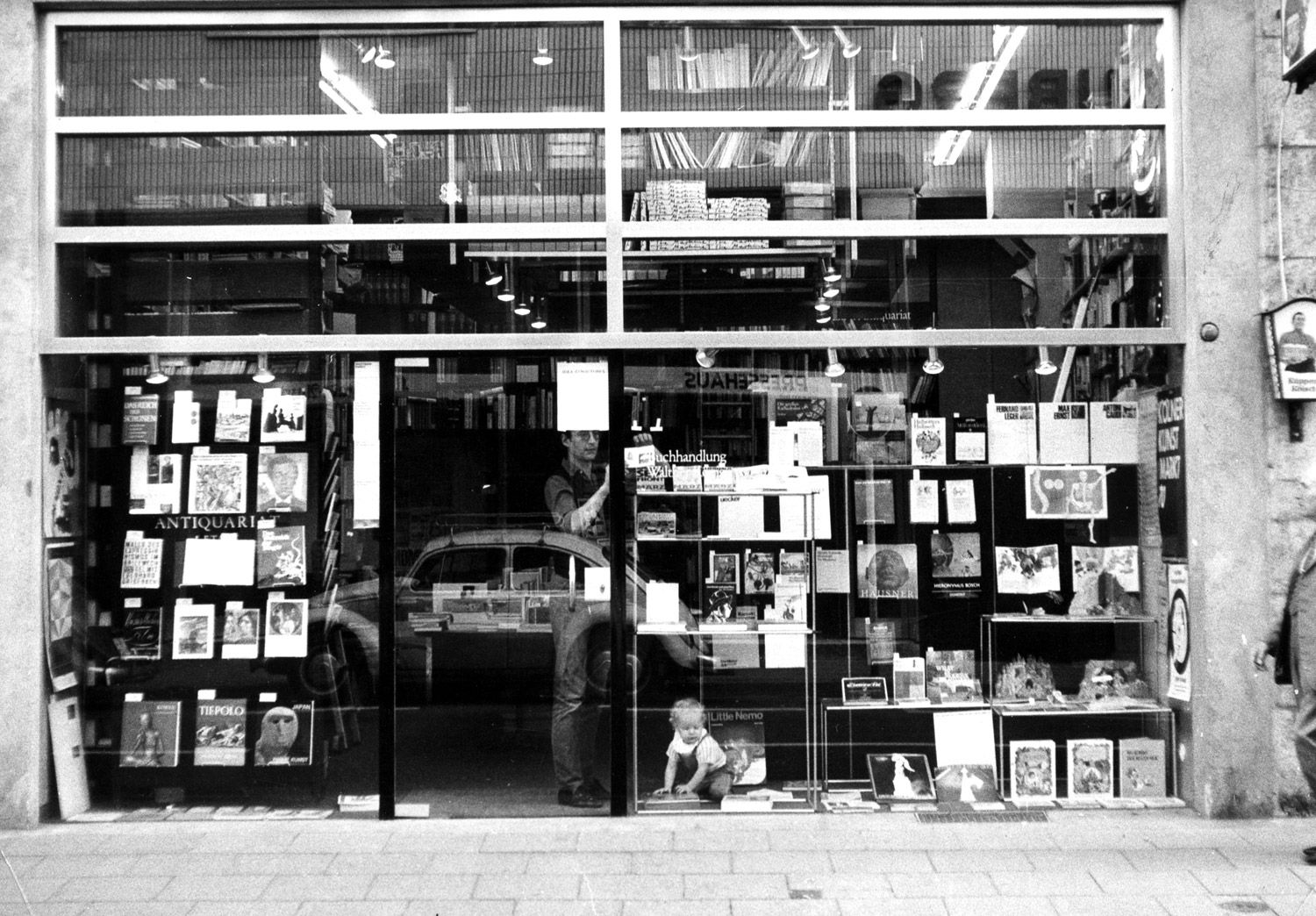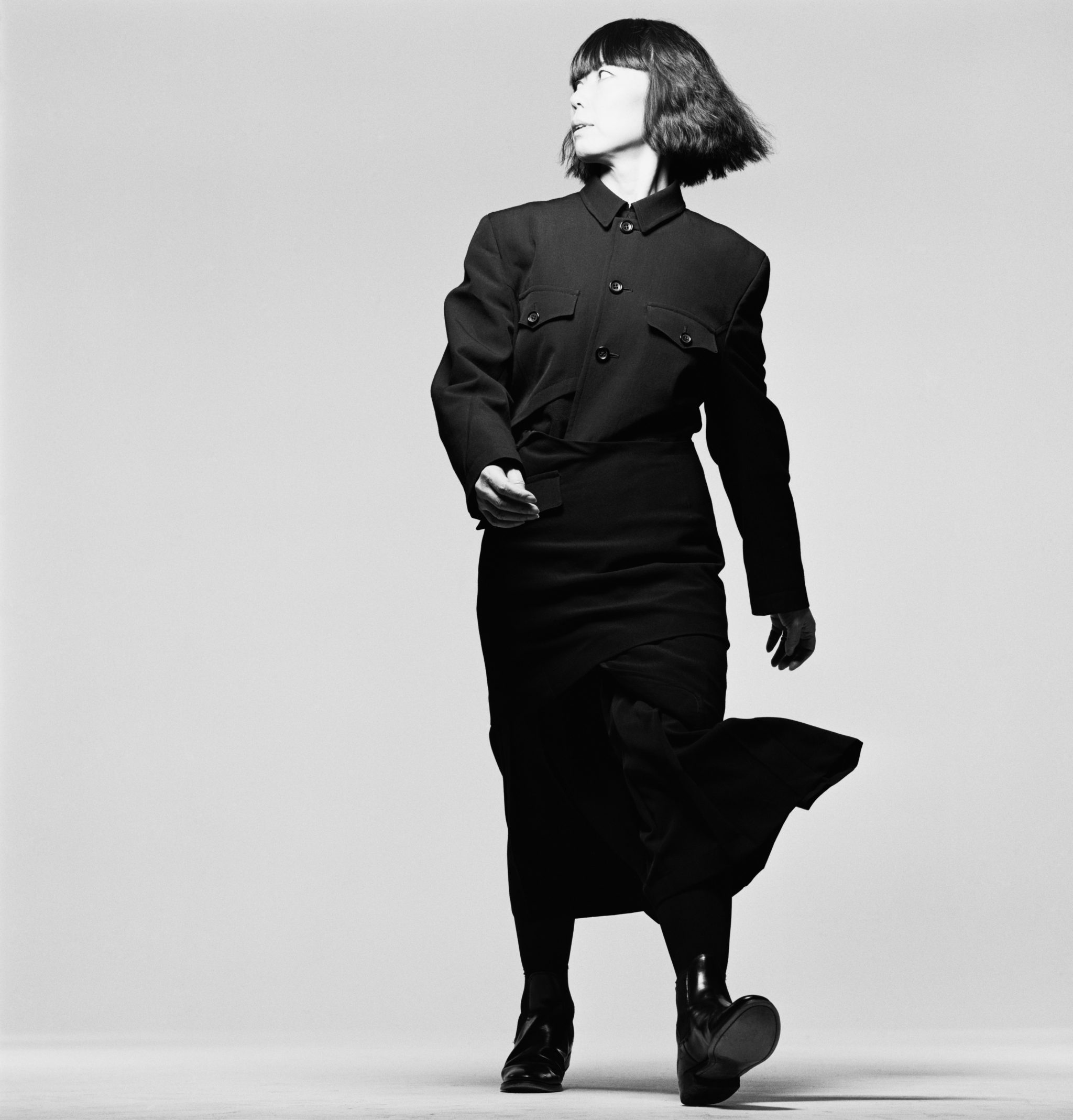FRANCESCO VEZZOLI: Plastic, Saturday Night, Milan
|CARLO ANTONELLI
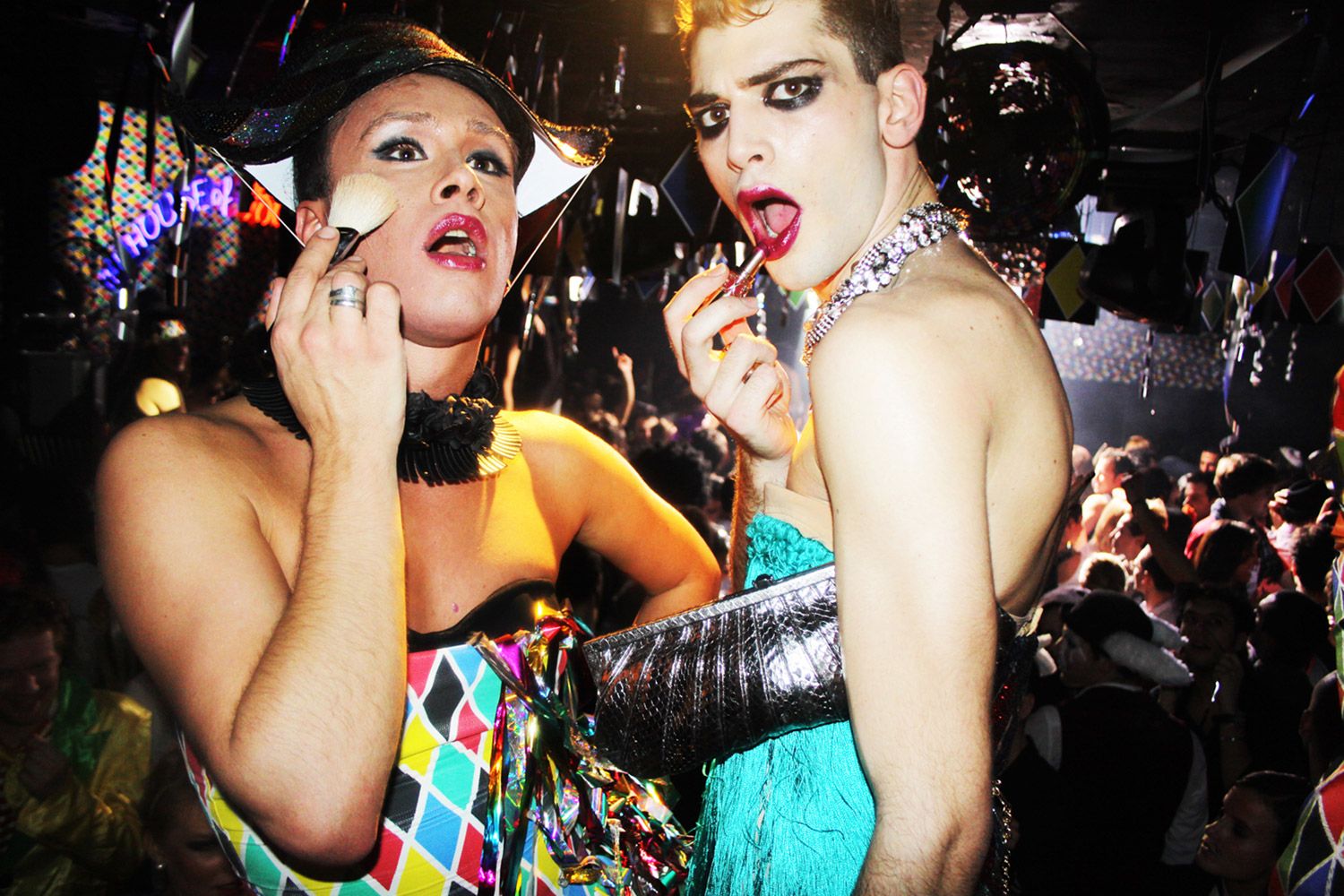
The artist FRANCESCO VEZZOLI recently had an epiphany. It was not the result of a spiritual journey or the discovery of a new author – Vezzoli had his revelation at PLASTIC, a disco heaven in Milan where the rules of club culture are upended and renewed. When he told us that the legendary institution was on the verge of closing, we knew what needed to be done: a series of embroidered record covers, dedicated to the Plastic Playlist, by Vezzoli for 032c. In addition, Carlo Antonelli – Editor-in-Chief at Rolling Stone Italy and film producer – sits down with the artist for a conversation that reveals the alchemical function of the nightclub: a place for dancing and discourse, now as much as ever.
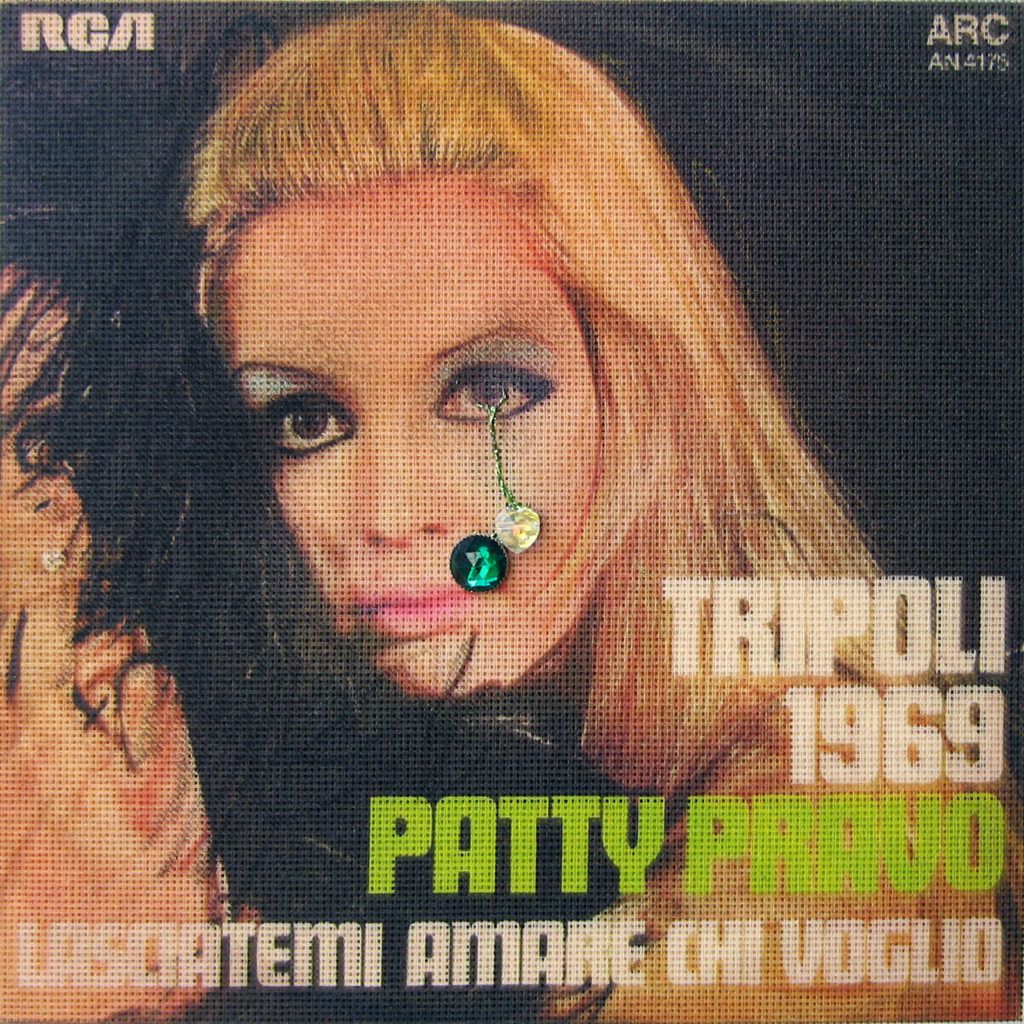
CARLO ANTONELLI: When was your first time in Plastic?
FRANCESCO VEZZOLI: Six months ago. I had never set foot in it before.
So it wasn’t a place you dreamed about going to when you were a teenager in Brescia?
No, because as a teenager I was under the spell of London. I read i-D, The Face. My first love was this London DJ named Fat Tony, who was a very cool DJ at the time. Then as an 18-year-old I went there for the first time and I became a club culture fanatic. And then I finally moved there.
Which, in a sense, is a very provincial attitude.
Totally. But you know I love provincialism. And then, six months ago, I found myself sad and lonely one night. I didn’t know where to go and a friend of mine said, “Why don’t you check out Plastic?” It was very automatic. There was a friend of mine next to Sergio in the DJ booth and they were playing this music. I walked in, and I went up to Sergio and said, “Hi, I’m Francesco Vezzoli”, he smiled and it was very cute. There was Stella, this transvestite with a black wig and very sensual lips. I thought she looked amazing, just like the cover of Donna Summer’s first record, I Remember Yesterday. I heard the music: Marcella, Amore Disperato, some Kylie, and some Mia Martini and all that stuff there, and I thought, “I’m home.” It was just around the corner and I didn’t even know it. Since that night, I went there every Saturday, I even came back from work trips on purpose.
I think Plastic could be one of Europe’s oldest clubs. I remember it in the mid-Eighties. It was exactly the same, same design, same mood.
The great thing about it is that it has no gender connotations. It’s not a gay club. It’s not a club where one can go to pick up. It’s pretty gay, but a lot of the people in there are straight. I also saw very few drugs there. And it was almost like, even if there were drugs around, they would bother me. They seemed out of place. It made me remember all those clubs I used to go to when I was a kid, the ritual, the fun. It was orgasmic.
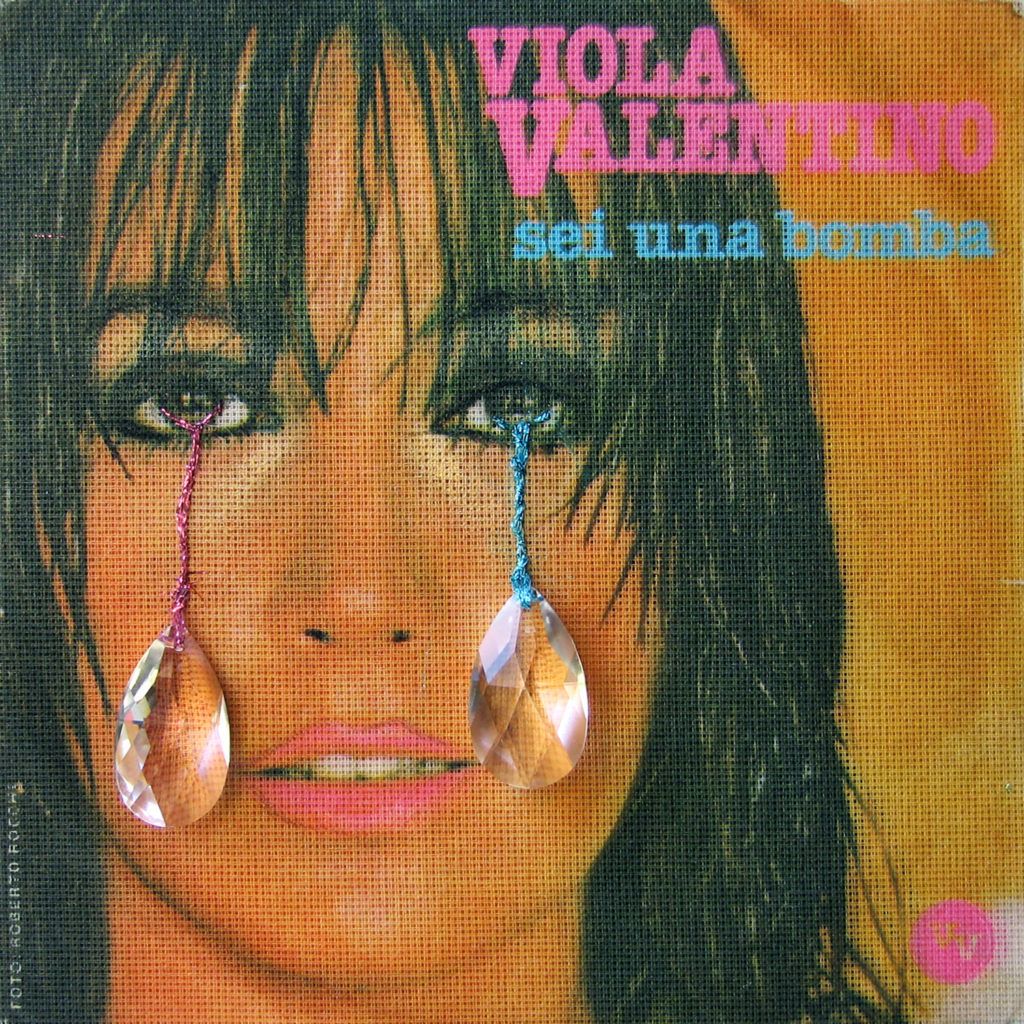
Did you dress up to go there, in these six months?
A little. I even dieted. It was a whole ritual. I’d get home at one, dinner at home, get ready, shower and shave. And then pick out clothes that objectively, why the fuck would you have them at all, if not to wear them in clubs – stuff that had been waiting there for me for years. And I had all these technical tricks, like leaving the jacket under the DJ booth so that when the lights came up I could grab it right away and not have to queue at the wardrobe.
So you stayed until the lights came up.
Every time. I would arrive when Sergio hit the decks, around two in the morning, and I would stand behind there and not leave that spot until he played the last song. Never went home before they turned on the lights. Never. I have witnesses. Friends, even. I made friends: something very rare, for me.
You’d get hugs? Kisses?
Text messages during the week saying, “See you Saturday?” Sure. I think they saw I wasn’t there to pick up or …
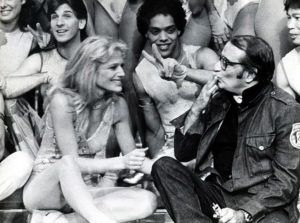
You went there innocently.
No, not really. But in the past I spent years going out to pick up and it was a completely different attitude. You see, I went there precisely to have fun. To see Stella, to see what she was wearing. To hear what records Sergio would play. He would play love songs! Just beautiful love songs, in Milan’s most crowded club. I found this amazing. Occasionally I would ask Sergio to play some records and, very kindly, he would play them. I think out of love for me, because they were true dancefloor killers.
In a certain way, can you say that you concluded something that had begun with your readings of i-D magazine?
Yeah. I hope they’ll reopen, because I’m ready for another year. I really found a mood that I’d thought was gone. Even my friends from New York told me that they can’t find a club like this anywhere, a place where people have so much fun. Even Stefano Tonchi [see 032c #14] told me he loved it. He said, “We are in the Eighties!”
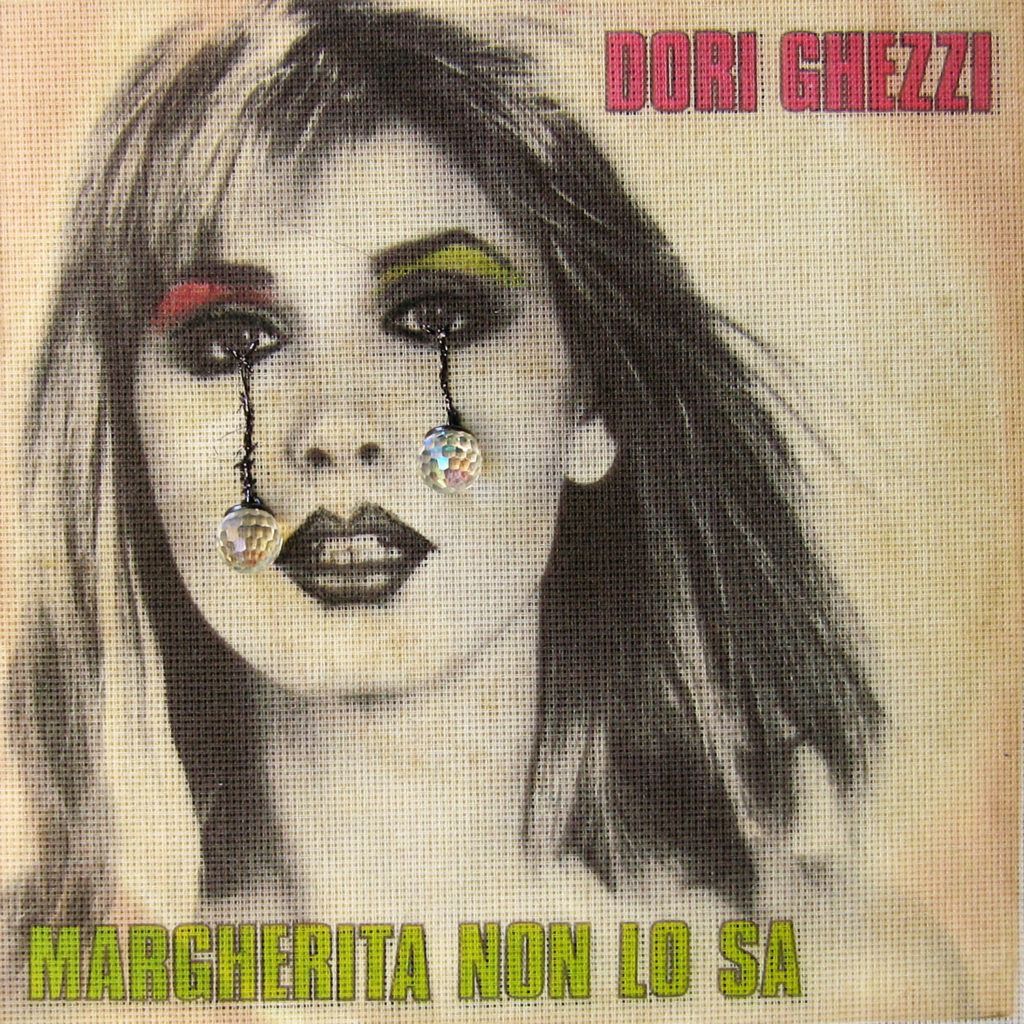
Which is absolutely true. Plastic is so Eighties.
Look, for someone like me, who fights to have Iva Zanicchi, Gia and Kim Alexis in video art, in galleries. I fight so that this visual object that I create is looked at with the same respect as something much more political. And in these people, I found a similar fighting spirit. I could identify with them, completely. You have no idea how much fun I had those nights. I was ecstatic. Pure joy. I hope they’ll re-open. I asked Mario Testino if he wants to take pictures of the girls there. I think these girls deserve the most glamorous photographers in the world.
Are these young, new girls or have they been there some time?
You mean Stryxia and the others? I don’t know, they’re all new to my life. But I had this mistaken idea about drag queens, informed by American drag queens. Example: Vienna, one of them, once told me, “As a man, I would wear Bottega Veneta, so I wear the same as a woman too.” American drag queens are extremely boring. It’s always the Liza Minelli thing. For me, this was a completely new interpretation. Stryxia might sing “Bella Ciao” halfway through the night, or start hurling insults at random people. And she has such a great name, taken from that fantastic TV show by Enzo Trapani, Stryx. You could do an 032c monograph on it.
Of course. Trapani was a genius.
You don’t have to tell me! Stryxia told me that the best compliment I ever paid her was when I told her she was the Lenny Bruce of transvestites. She’ll say things like, “You shits, you all came here to suck each other’s cocks, you disgust me, you thought you’d come to Billionaire, but this is not Billionaire, so if you don’t like it, why don’t you get the fuck out of here!” She’d rant like this every Saturday. It was like a mixture of stand-up and Eighties drag. It was a mixture of languages. Politically, she’d place herself in a radical, aggressive way, but coupled it with an aesthetic vocabulary that transmits a political message in extreme opposition. I mean, she’ll be dressed like Lorella Cuccarini, and she tells me, “You thought you were at Billionaire, you faggot,” when Lorella Cuccarini in those years was an agent of something that then became the current political hegemony. I mean, maybe I was the only one picking up on this, but it seemed so sophisticated to me.
So, technically, it was an obscene form.
Theoretically. But with the added value of taking place in a not-declaredly gay venue, which seems like a great way of overturning expectations.
But clubs always create an alternative political community. Why did disco favor the gay community, Studio 54, et cetera? Because they created an environment in which societal norms could be safely overturned, and the first norm were sexuality, exhibitionism, hierarchy. It might be banal, but don’t you agree?
It’s important that you say these things, that you write them. If sometimes I have been the interviewer, this time I am the interviewee. It’s your job to give a sociological dignity to my passion. I am just a groupie. My presence there was purely for the fun of it.
Are there any videos that show you having such fun?
I hope not. I do know that there are some implausible, embarrassing pictures out there.
Did the enthusiasm ever push you to make out with someone?
One night I got very drunk and I kissed a girl, something I hadn’t done in 20 years.
So it must be a great club.
Well, if it pushed Vezzoli to make out with a woman …
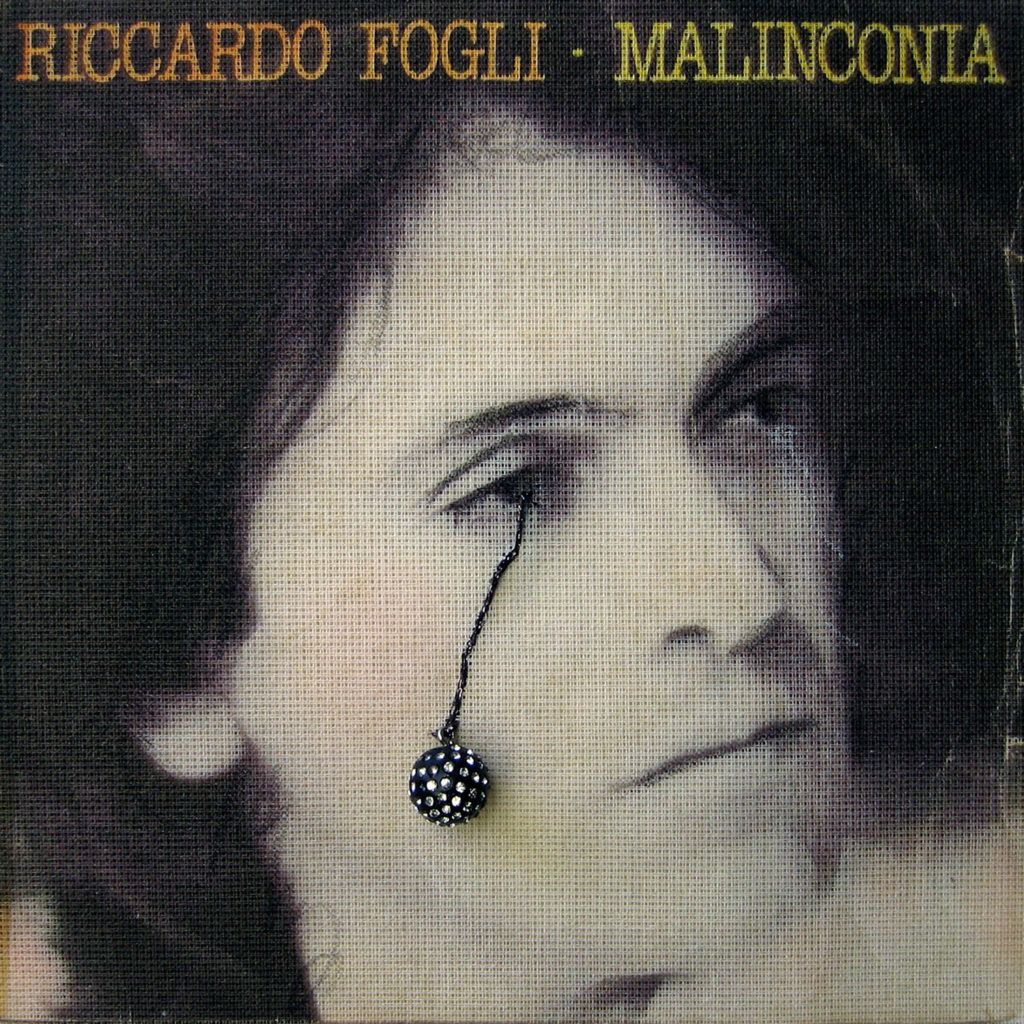
Ok, now this has officially turned into something of a therapy session. Let’s try to figure out how come you did, or did not, have this much fun in your childhood, so much so that you felt the need to rediscover that feeling.
I used to go to Riccione with my grandma, Maria, my other grandma, Mimì, two aunts, Pia and Lucia, and my aunts’ friends. I was like six at the time, and they were between 65 and 80. I wanted to go clubbing. In 1975 I was obsessed with Donna Summer. I forced them to take me to clubs. I was six years old and I wanted to hit all the clubs of the Adriatic. And I managed to have my way! I saw all the clubs of the Riviera from the age of seven onwards. I loved to dance. It was the most fun thing I could do, or even think of doing. I used to go to record shops and ask for Nuda, by Mina, and disco, and the clerks would look at me like I was a little alien. My head couldn’t reach the counter and I asked for records like I Feel Love or I Remember Yesterday.
Was it a purely musical thing or was it also visual, aesthetic?
I don’t know. I had a babysitter and when my mother left we’d play disco. It wasn’t just so I could dress up in women’s clothes. It wasn’t necessarily linked to my sexuality. I used to tell the babysitter, “Now you play Dee D. Jackson.” It was insane. I lived disco culture, but I was six.
The extreme difference between that disco culture – it wasn’t even called “club culture” at the time – and today’s, is that it actually was a culture. It strikes me that there might not have been, at least in terms of what we remember, any place more cultural than Studio 54 in those years.
I remember, when I was seven, I asked my family to take me to Studio 54. We had an uncle who lived in the States, and this is completely trans-gender, trans-class, because how can a seven-year-old, even the richest, stupidest, craziest, seven-year-old kid in the world, articulate that he wants to go to Studio 54? I asked my grandma if we could go to New York, see my uncle, and go to Studio 54. I wonder where I read it. I still don’t understand it. But then again, I can’t repress myself too much. I didn’t have Barbie dolls. I wanted to go to Studio 54.
You didn’t play with Barbie dolls as a kid?
No, not really.
I did.
I played with soldiers.
You mentioned Dee D. Jackson and, even if it was somewhat flat, there was something of the future, the alien about it. It was something new.
I wasn’t just faggy, at least I was also forward-looking.
So, this incredible, never-ending revival of the Eighties, doesn’t it strike you as a nostalgia for a period in which people didn’t suffer from nostalgia?
Yes. But it is also a political thing. It’s the same reason for which I have always defended the artists of the avant-garde who everybody hated for so long. I insist: this nostalgia is something that everyone represses, but it’s there.
But what is it? A form of innocence?
No, absolutely not. It’s political. After the Eighties there was a historical era in which it seemed as if those values had to be denied, in which hedonism itself had to be denied. In art, in the Nineties, a certain type of figure was considered “out”. I find this unjust. Now that hedonism has been once again re-valued, I don’t understand why those artists who were condemned in the Nineties are still forgotten under that etiquette. We should historicize them as the discoverers and defenders of hedonism. Besides from nostalgic songs, every type of business is going after glamour.
I wonder if those songs and television were they also a form of glamour for you?
Of course. But now I try to give them a political dimension. I was talking about art, but think about fashion. Whenever anyone has to mention something, they always mention that stuff: Studio 54, the Opium YSL white party. Everyone, when asked about a hypothetical “golden age”, refers back to that. Clearly, this is something that gives us a sort of absolute pleasure in terms of aesthetics and memory. I think it’s the same with art. The art world is going back to the Eighties. Not so much in terms of the type of work, but in terms of behavior, of structure. Nothing has changed. They said there was a crisis, but isn’t everything just like it was? They said Mary Boone was done, but isn’t everyone like Mary Boone now?
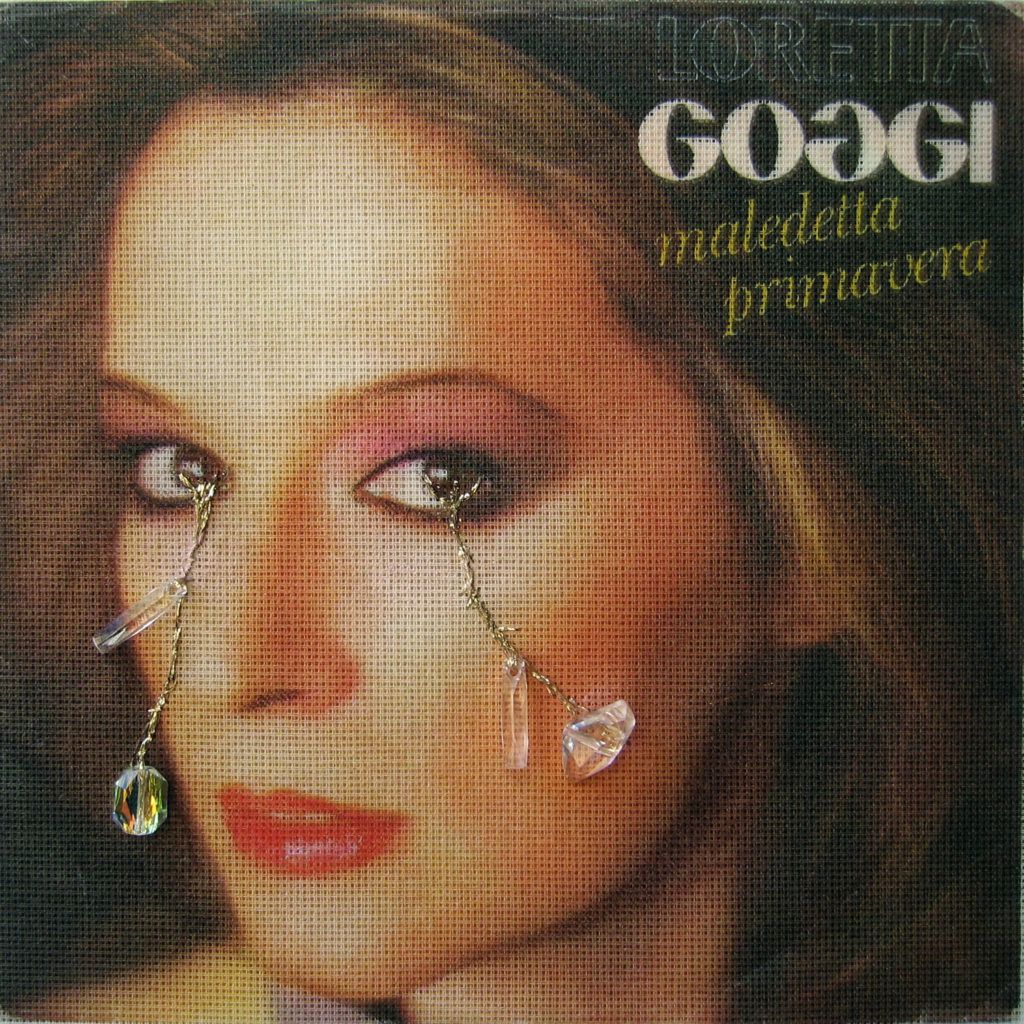
What is glamour?
I don’t know. I am afraid of oversimplification. But let’s say that, if you give up on certain pleasures in the name of certain ideologies, then you’ll want to get right back to them, if those ideologies leave you disappointed. If you say, “I won’t do this, because the Party disagrees with it,” and then the Party screws you, you’ll say to yourself, “And to think of all those pleasures I kept from myself.”
You’re doubly fucked. But mightn’t it be that you had so much fun because you’d never had so much fun before?
Sure. I created a paradoxical dynamic because I would be the outsider in every circumstance. I had to be. I wanted it. In my life I was never sure if I would be let in the club, because I always picked such unreachable clubs that every weekend was an adventure. A 20-year-old Italian, trying to get into the coolest clubs in London? It’s not enough to be dressed well. They have to know you.

Is this something that, after so much travelling, has finally reconciled you with Milan? With Italy?
A bit. Yes. I honestly think it was the best club in the world. I’d see these people of all ages, so happy, trying so hard with their looks, and such a ritualized type of fun that was, yet so different from the banality of cruising in New York or LA clubs, where everything is so predictable. The bicep. The erection linked to the size of the bicep – at places like Akbar, in Los Angeles. When I was 15 I wanted to go to Les Bains Douches …
There was a great piece about that last month in Les Inrockuptibles. That part of Parisian culture is incredible. The photos of the time are excellent, and you never see much of it. They made thousands of books on clubbing in NY in ’79/’81, but the European variation on that is much fresher.
I’d like to end with saying that it is in this transversality that we can create between melodrama, melancholy, politics and aesthetics, that we create a special alchemy, which, with a certain arrogance, I would deem magic and absolute. There is no demographic, no targeting, no marketing, no business behind it.
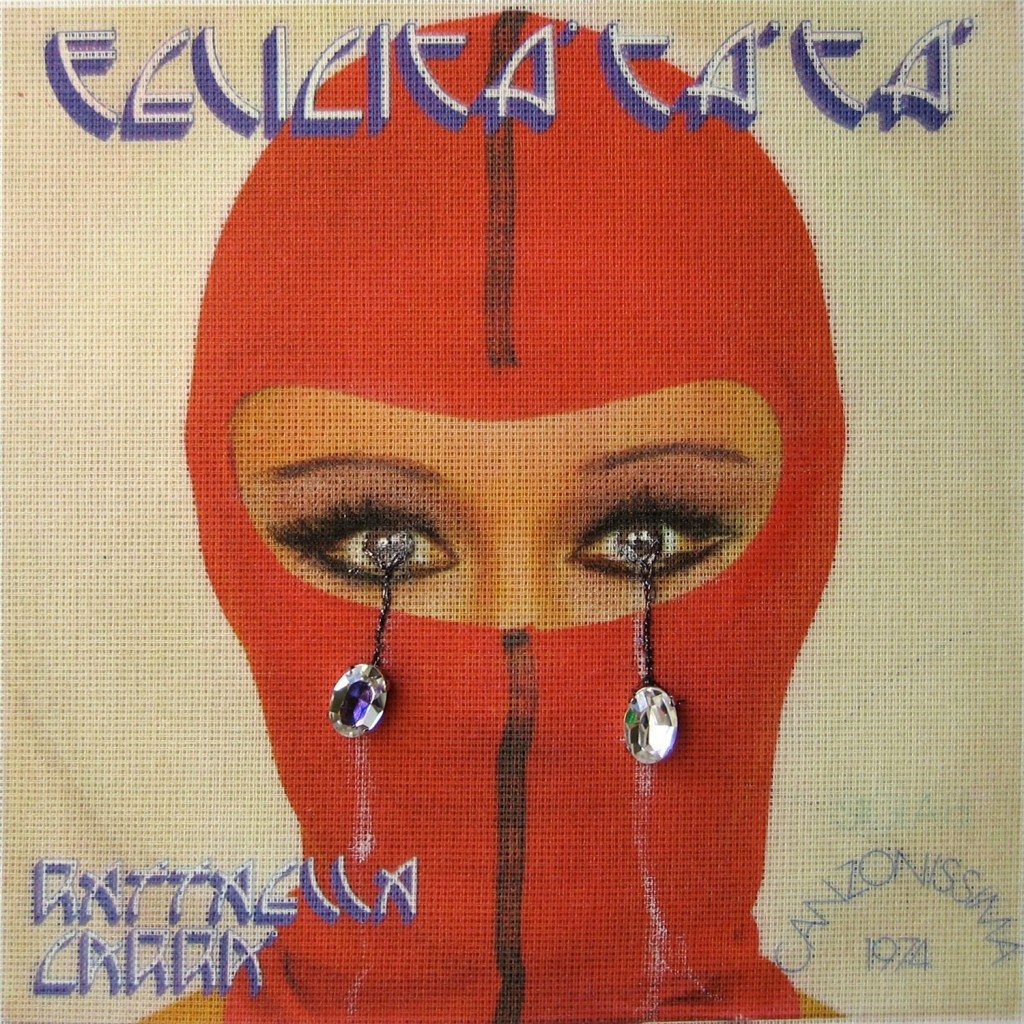
You noticed a certain freedom.
Yes. A freedom that is the essence of clubbing.
Generosity, community …
Exactly. It was like when you go out for dinner with someone who you can’t talk about work with, or about power, so you’re free to talk about love.
Can we dream of nursing homes with a similar musical selection?
We should invent them and make them extremely exclusive and expensive.
Demographically, this is a very rich generation.
And one that will die at a very old age.
We could make it.
We will create glamorous nursing homes.
It’s a subtle economic operation for our future.
One which will allow us to live comfortably into our old age, when nobody will want our embroideries or our editorial advice.
All six artworks by Francesco Vezzoli, 2010. Laserprint on canvas, metallic embroidery, custom jewelry, ‘Touche Blush’ by YVES SAINT LAURENT, ‘Silky Eye Shadow Squad’ by SHISEIDO, ‘Glowing Color Powder Blush’ by DIOR, 20 x 20 cm each, edition of one.
Credits
- Interview: CARLO ANTONELLI
